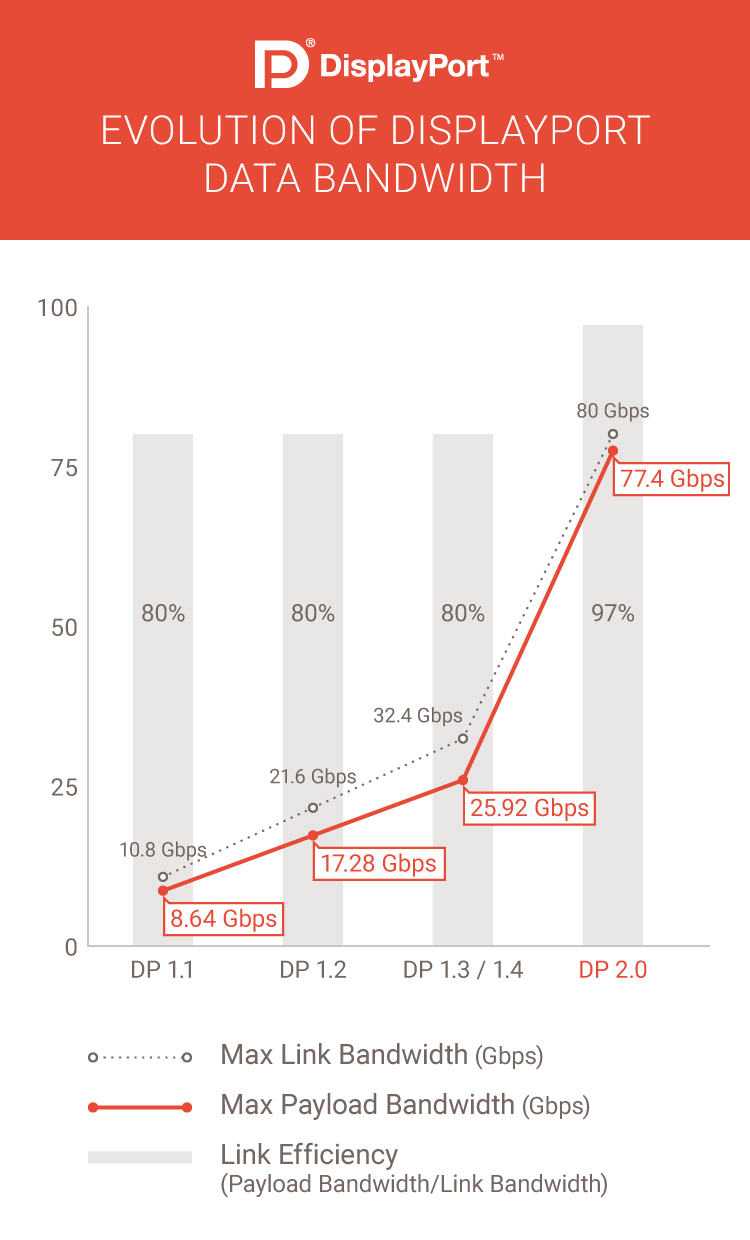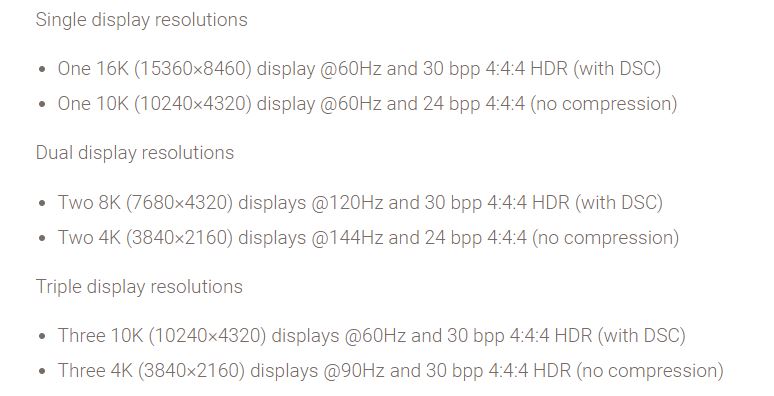The Video Electronics Standards Association (VESA) has announced a major update to the DisplayPort standard after March 2016; with some major overhaul. The buzz of the town in DisplayPort version 2.0. is now it supports three times the bandwidth of its predecessor which gives the ability to DisplayPort 2.0 to operate single 16k displays at 60Hz. In dual setup, it can support two 8k displays at 120Hz
Three years ago, the VESA has launched DisplayPort 1.4, as compared to that the next major version 2.0 has greater bandwidth. According to the VESA latest press release, the DisplayPort 2.0 has triple its bandwidth compared to this predecessor – a factor that will play a major role in the next few years with increasingly higher resolutions in displays and VR applications.
According to official VESA data, DisplayPort 2.0 achieves a peak performance of 77.37 Gbps which left behind the latest HDMI standard 2.1 specifications and speed; a bandwidth of 48Gbps. This given speed by VESA on the datasheet makes it possible for DisplayPort 2.0 to be the first standard to run “8K displays at 60 Hz with full-colour resolution and 30 bits per pixel (bpp) without compression”.
DisplayPort 2.0 is also the first standard to support 16K displays at 60Hz, maintaining “full-colour resolution and 30 bits per pixel (bpp)”, but the latter is only possible with Display Stream Compression. The support of 10k displays at 60 Hz is possible without compression.
Furthermore, DisplayPort 2.0 also supports USB Type-C connectors and can send signals through it too. Plus also the company will also include Intel’s Thunderbolt 3 technology. Add of Panel Replay feature, makes it possible for GPU or video process to refresh the image only where changes have taken place – important for power savings and better performance. First devices with DisplayPort 2.0 are probably the first to be expected by the end of 2020.
For more info see the official press release.


Related Posts
EU passed a law, from 2024 smartphones must use USB-C port including Apple
How to get USB Type-C ports on your computer? Different ways
AMX Infiniti USB-C 3.1 Gen 1 Cable Review
7 Best Mid-range Pen drives which you can buy in 2020
DisplayPort 2.0 is now here to support 16K display at 60Hz
Portronics Launches “Mport 4C1” a 4-in-1 Multimedia HUB